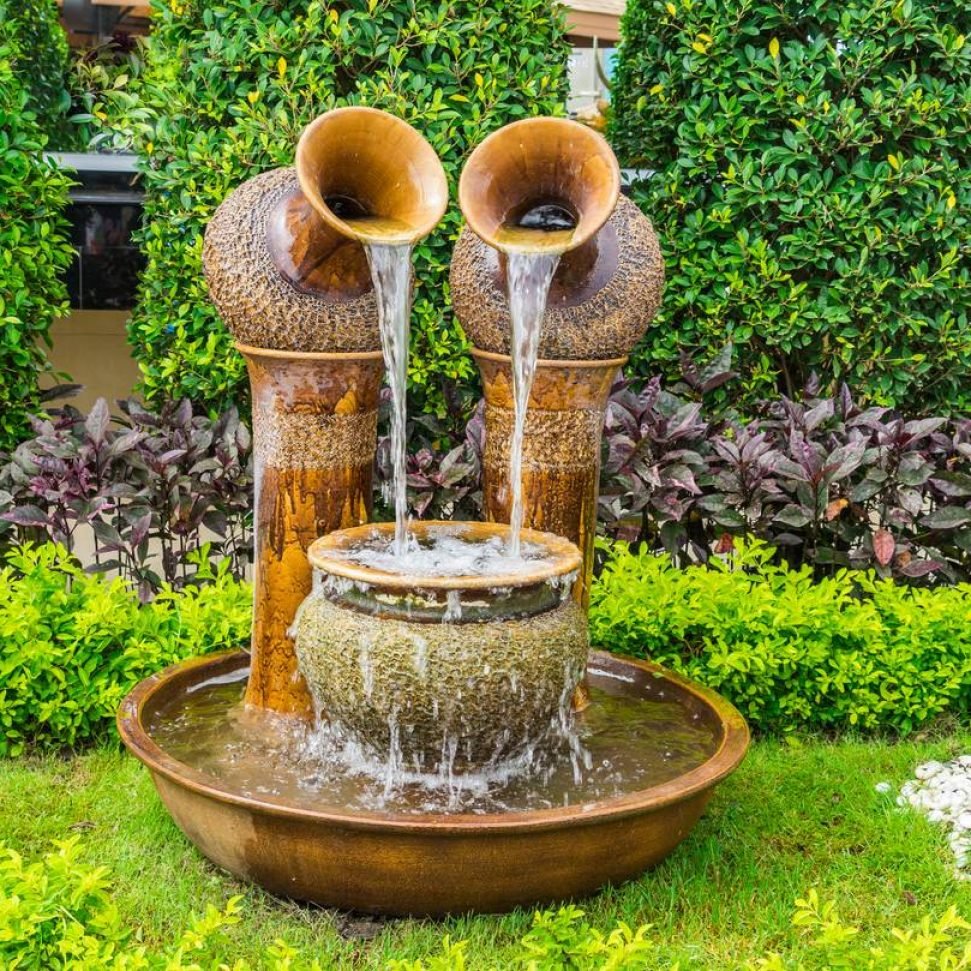Creating a meditation garden offers more than just an aesthetic upgrade to your outdoor space. It provides a personal sanctuary where mindfulness, peace, and reflection flourish. Whether you have a large backyard or a modest patio, designing a garden centered on relaxation can transform your daily routine. With these 15 creative ideas, you can cultivate a space that nurtures inner peace and rejuvenates your spirit.
1. Choose a Quiet Location

The foundation of a meditation garden begins with location. Seek out the quietest area in your yard or home exterior—somewhere away from noise and distractions. A secluded corner, a rooftop nook, or even a hidden patio space can become the perfect sanctuary. If you’re in an urban setting, consider using privacy panels or noise-blocking plants to buffer the outside world.
Privacy is essential for uninterrupted meditation. To create a peaceful atmosphere, plant tall shrubs or use natural barriers like bamboo fencing. Position your garden so it faces away from traffic or other disturbances. The goal is to make the space feel removed from the rest of your daily life, even if it’s just steps from your door.
If you’re limited on space, don’t be discouraged. Container gardens on a balcony or courtyard can be equally effective. The key is how you curate the elements within your available area to invite calm and clarity.
2. Define Your Space with Natural Boundaries
Defining your meditation area with natural boundaries helps establish a sacred feeling. Boundaries can be formed using simple landscaping features like stone edging, wooden slats, or low-growing hedges. These elements create a subtle signal that you’re entering a place of peace.
These borders don’t need to be imposing. Gentle transitions, such as a low stone wall or a pathway lined with flowering plants, can create separation without feeling enclosed. The visual cue helps shift your mindset into a more focused and introspective state.
Circular layouts are especially calming, as they represent unity and flow. However, rectangular or irregular shapes can also work if balanced with soft lines and organic materials. Let your chosen shape and boundary materials enhance your overall design.
3. Add a Comfortable Seating Area
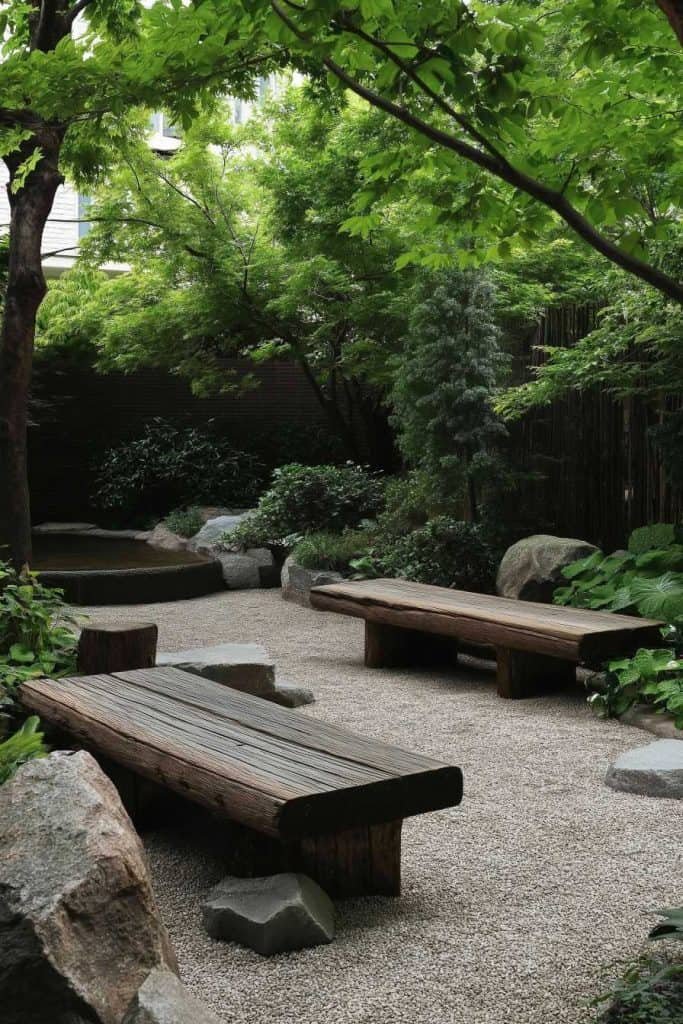
Comfort is vital when spending time meditating outdoors. Incorporate seating that invites you to stay a while: think weatherproof cushions, teak benches, hammocks, or even a large flat rock warmed by the sun. The type of seating you choose will set the tone for how you engage with the space.
Position your seat to face a focal point, like a water feature or a beautiful plant arrangement. This orientation helps you settle your mind by giving your eyes a place to rest. Don’t forget to consider shade—use a pergola, umbrella, or nearby tree to offer comfort on hot days.
For smaller spaces, a foldable meditation stool or yoga mat can be a flexible option. Keep materials natural and tactile to encourage grounding during your meditation sessions.
4. Incorporate Water Features
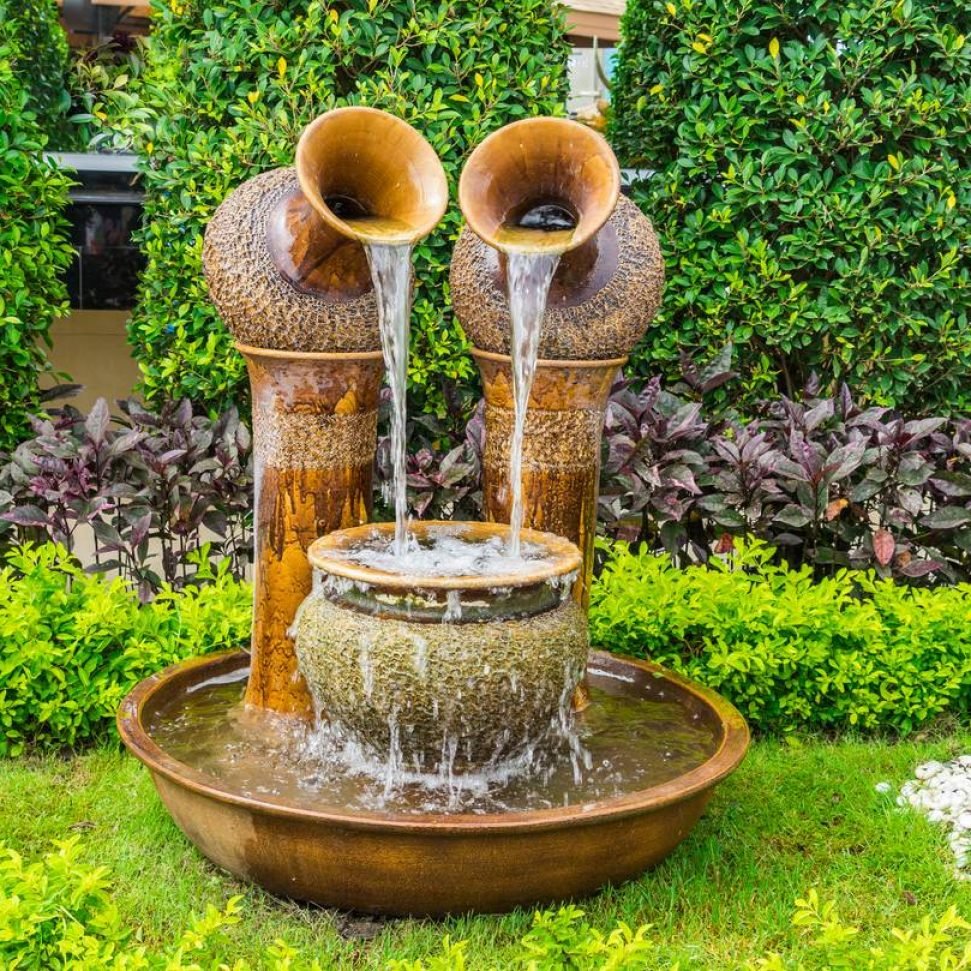
Water adds a soothing sound and visual element to your meditation garden. The gentle trickle of a fountain or the soft movement of a small pond can quiet the mind and foster a sense of stillness. Water also symbolizes cleansing and renewal, making it a fitting feature for a meditative setting.
Fountains come in various sizes and can be as simple as a tabletop bowl or as grand as a cascading wall fountain. If you prefer something natural, a small pond with stones and aquatic plants can offer both serenity and wildlife activity, like dragonflies or birds.
If maintenance is a concern, opt for solar-powered fountains that require less setup. Even a decorative bowl of water with floating flowers can add tranquility to a small meditation corner.
5. Use Natural Pathways
Paths guide your journey into mindfulness. Using materials like gravel, flagstone, or wooden planks, you can create a meandering route that encourages slow, intentional walking. The texture and sound of the path beneath your feet help ground your awareness.
Curved pathways are ideal as they slow down movement and suggest a natural flow. Consider adding focal points along the way, such as small statues, flower pots, or meaningful symbols. These encourage pause and reflection.
A labyrinth pattern is another profound addition to a meditation garden. Walking a labyrinth can be a meditative practice in itself, helping to focus the mind and reduce anxiety through repetitive movement.
6. Surround Yourself with Greenery
Lush greenery provides both visual peace and natural insulation from the outside world. Choose plants with varying textures and heights to create depth and privacy. Leafy plants like hostas, bamboo, or ferns work well for softness and serenity.
Layering plants is key to creating a cocoon-like feel. Taller shrubs and small trees form the outer edges, while lower plants like lavender or ground covers can be placed near pathways and seating. This method draws the eye inward, deepening the sense of enclosure.
Consider seasonal variation so your garden remains engaging year-round. Evergreens, flowering perennials, and ornamental grasses can be mixed for color and interest in every season.
7. Create a Zen Sand or Rock Garden
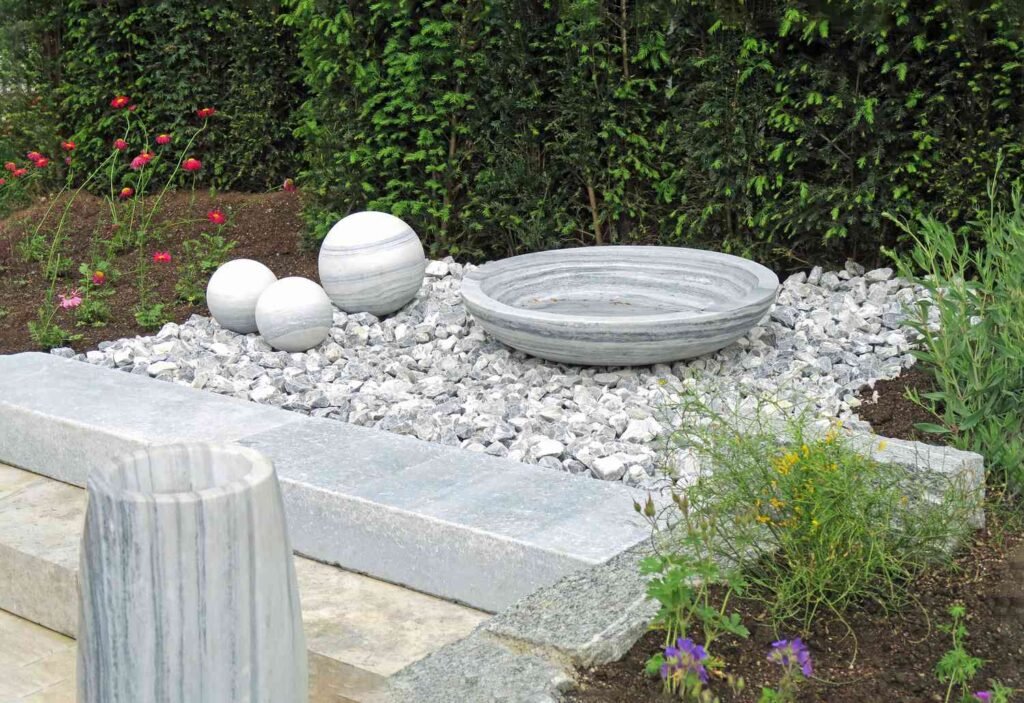
Inspired by Japanese design, a sand or rock garden brings a deeply symbolic and tactile element to your space. Raked sand or gravel represents water and movement, while carefully placed stones symbolize mountains or islands. Together, they encourage quiet contemplation.
These gardens are typically minimal, which allows the mind to rest without distraction. Use a wooden rake to create patterns in the sand, focusing your thoughts on each motion. It becomes a meditation practice on its own.
A Zen garden can be scaled to any size, from a large outdoor section to a tabletop version. Choose neutral colors and simple containers to keep the focus on form and flow.
8. Add Moss or Ground Cover
Soft underfoot, moss and low ground cover plants enhance the sensory experience of your garden. Moss in particular thrives in shaded, moist environments and brings an ancient, woodland charm to meditation spaces.
If moss isn’t practical for your climate, alternatives like creeping thyme, Irish moss, or sedum work beautifully. These create a carpet effect that invites barefoot walking or sitting. They also help retain soil moisture and suppress weeds.
Strategically plant ground covers between stepping stones or around statues for a seamless look. Their texture and fragrance offer added layers of calm.
9. Install a Meditation Bell or Wind Chime
Sound is a powerful tool in meditation. A soft bell or chime can signal the beginning or end of a session, or gently bring your awareness back to the present moment. Choose tones that are light, clear, and soothing.
Wind chimes made from bamboo, copper, or glass offer varied tones and textures. Hang them where they can catch a natural breeze but won’t overwhelm the space. Their spontaneous music adds a spiritual touch to your garden.
Consider a handheld meditation bell or gong if you prefer more control over sound. Ritualizing its use can deepen your practice and bring intentionality to your garden experience.
10. Include Sculptures or Sacred Symbols

Adding spiritual or symbolic objects can reinforce the meditative atmosphere. Sculptures like Buddhas, stacked stones, or animal totems serve as visual anchors and sources of inspiration. Choose symbols that resonate with your beliefs and intentions.
These elements should be placed mindfully. A statue can become the focal point of your garden, inviting you to sit or reflect nearby. You might also position smaller tokens among plants for subtle, sacred surprises.
Keep decoration minimal to avoid visual clutter. Let each piece serve a purpose and contribute to the space’s overall calm.
11. Lighting for Evening Meditation
Evening is a wonderful time for meditation, and lighting plays a crucial role in setting the mood. Opt for warm, low-intensity lights that create a soft glow. Solar lanterns, LED candles, or string lights can all add gentle illumination.
Lighting pathways helps guide your movement while preserving a sense of stillness. Hidden uplights behind plants or under benches can create a magical ambiance without drawing attention.
Avoid harsh, direct lighting that disrupts the nighttime serenity. Instead, use light to mimic the glow of moonlight or fireflies—inviting yet understated.
12. Use Aromatic Plants or Incense
Scent is deeply tied to emotion and memory, making it a powerful tool in meditation. Incorporate fragrant plants like jasmine, lavender, rosemary, or mint to enhance the sensory atmosphere of your garden.
Place these plants near seating areas so their scent can be enjoyed up close. You can also use essential oil diffusers, herbal sachets, or incense burners for more concentrated fragrance.
Be mindful of wind direction and strength—too much scent can become overwhelming. Subtle, natural aromas work best for maintaining focus and relaxation.
13. Add a Yoga or Stretching Platform
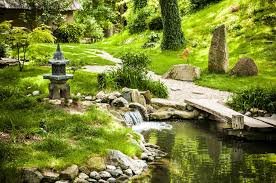
Combining meditation with gentle movement like yoga can deepen your mind-body connection. Build a small wooden platform or deck in a quiet corner for stretching, yoga, or seated breathwork.
Use natural materials that blend with the garden, such as cedar, bamboo, or reclaimed wood. A simple mat or low cushion is all you need to make the space functional.
Ensure the area is level, clean, and protected from harsh sunlight. The platform can double as a general seating area or outdoor reading spot when not in use.
14. Incorporate Reflective Surfaces
Still water, polished stones, or garden mirrors add reflective qualities to a meditation garden. These surfaces encourage introspection and amplify the feeling of openness and light.
Mirrors should be used sparingly and positioned to reflect greenery or sky—not clutter. Water features like a shallow basin or birdbath can also serve as a natural mirror.
Balance is key when using reflection. Too many shiny elements can become visually distracting. Instead, aim for quiet elegance and visual calm.
15. Make it Truly Yours
Your meditation garden should reflect your personality and spiritual practice. Incorporate personal items like prayer beads, crystals, handwritten intentions, or a small altar. These items connect you more deeply with the space.
Keep your personalization consistent with the garden’s tone—simple, natural, and meaningful. Even the act of designing or maintaining your garden can become part of your mindfulness practice.
Remember, there’s no right or wrong way to create your retreat. Let your intuition guide you and trust that your peaceful corner will evolve over time.
Final Thoughts
A meditation garden isn’t about perfection—it’s about presence. These 15 ideas offer a starting point for designing a space that nurtures your well-being and supports your mindfulness journey. Whether you adopt one idea or blend several, your garden will soon become a haven of peace.
Begin with a single feature that speaks to you, and let your sanctuary grow naturally. In today’s fast-paced world, even the smallest moment of quiet can make a world of difference.

